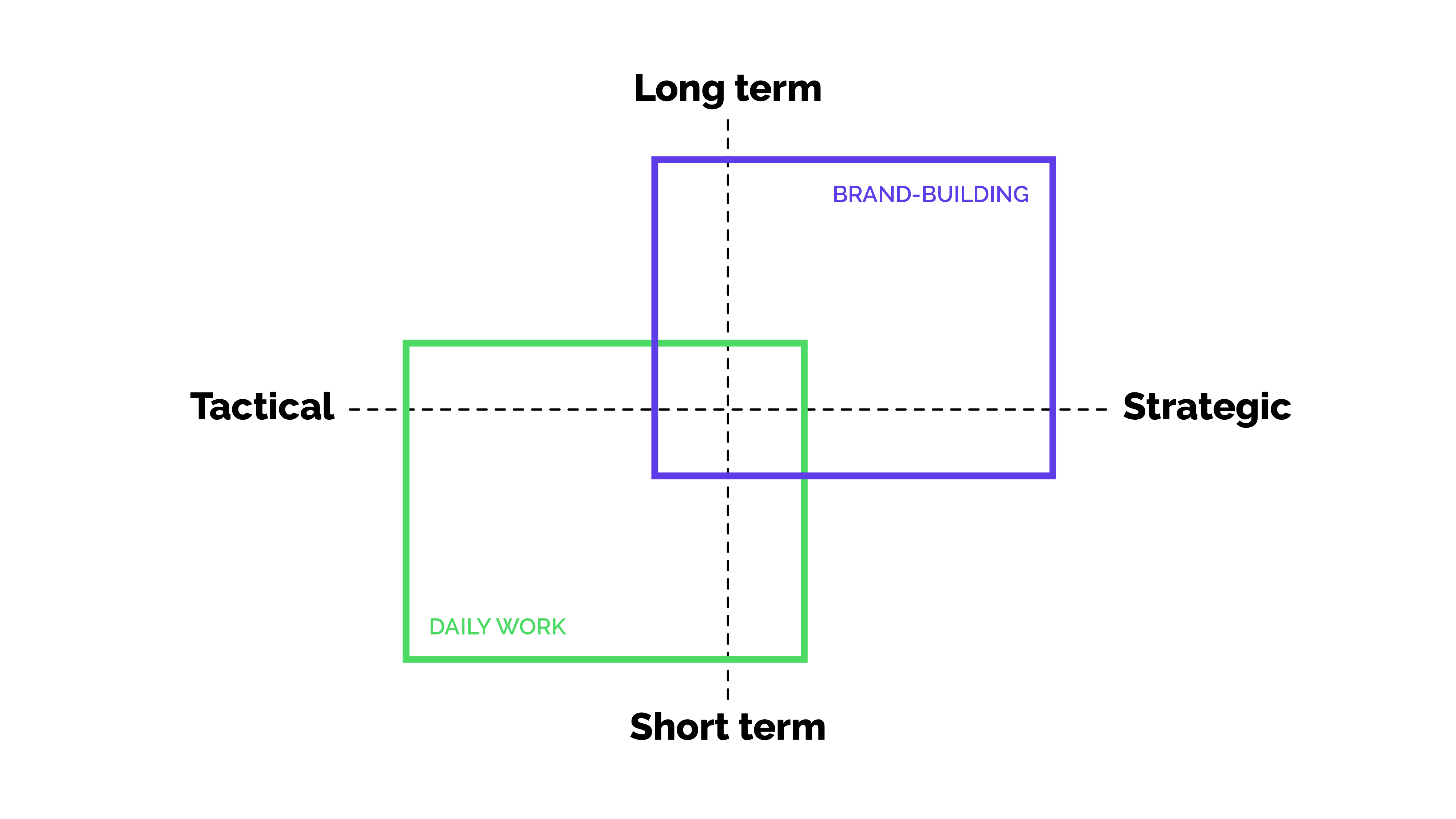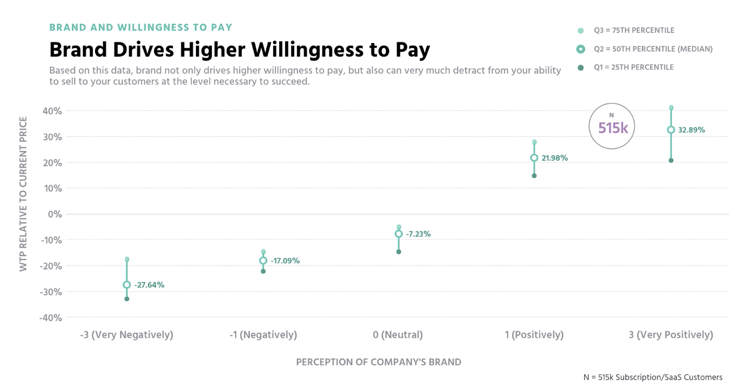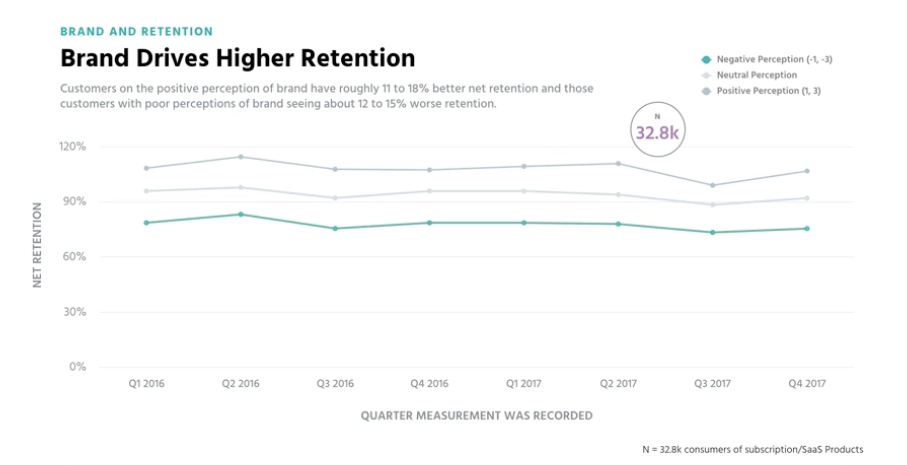Excuse me, do you have a moment to talk about one of my favorite topics?
It’s a lil’ something called brand.
While everyone is busy talking about growth hacking, experimentation, and data, something very important is often left out of the discussion: the brand.
I'm writing about this because I believe the actual essence of growth marketing is bringing together both the short-term hacks and the long-term strategic approach — both very closely tied to your brand.

In this blog post, I’ll go through a couple of things related to brand, how I view branding from a storytelling perspective, and why I think this is super important — especially for B2B SaaS companies.
And psst: If you’re interested in this topic, stay tuned for more (and subscribe to our Advance Insider newsletter to make sure you won't miss any future posts!)
Grab your drinks, grab your snacks, and let’s go!
What is “brand”, even, and why should you care?
Let’s start with a bold statement: Your brand is the single most important aspect of your company’s strategy, and therefore, it belongs in the CEO universe.
Many marketers have a bad habit of thinking that management is not interested in the brand. In general, however, this is not the case. In fact, I’d argue that it’s very unlikely ever to find a CEO who would say that a good reputation isn’t something their company should be interested in*.
Also, the CEO’s desk is basically covered in issues related to competition, growth, positioning, customer experience, and building a sustainable business.
And what do all of these have in common?
You guessed it — all of these are closely interlinked with your company brand.
The problem, then, is not that the importance of “brand” is not understood. It’s simply that there are often misunderstandings related to what brand consists of and what it contains.
In all its simplicity, your brand is ultimately a matter of what perceptions your target audience has of your company and influencing those perceptions in a way that supports your long-term business goals.
*But what they definitely are not interested in are the old-fashioned "marketing campaigns" that bring no actual value to anyone. (These campaigns are also the reason why I often say that brand marketing has a brand problem.)
Of course, you can never mention the word brand and still make a great profit, but then your company is also significantly more susceptible to turbulence.
A strong brand, on the other hand, pays off comfortably and in nice ways, like your customers’ continued willingness to pay for your products or services, or as higher retention rates.


Source: Profitwell
In a perfect world, the board and the top management of a company would be the ones defining the direction and goals for your company, and all parts of the organization would work towards that goal in their own way.
Here, the role of marketing is central but not unique: Marketing efforts towards a great brand will not help if your customer service sucks and no one wants anything to do with you.
Therefore, you should aim for consistency. The story of your organization and brand should be the same for everyone, also meaning a consistent experience for your customer: This includes any experiments or hacks you decide to do, but also all the other stages of their customer journey.
Read more: Growth Hacking vs. Growth Marketing
Define your company story
When I say that brand belongs in the CEO universe, I don’t mean that all CEOs should now take part in selecting color palettes and scripting brand videos.
I mean that they should be defining strategic lines and standing at the forefront of your common company story.
What story, you ask? Here’s my favorite image:
Let’s break it down.
From a marketing perspective, writing your story means that you take strategic steps and make choices that set the direction for marketing. These choices give the mandate to manage and develop your brand using a range of marketing tools.
While brand marketing used to be mostly one-sided advertising and PR work, companies are no longer dependent on what kind of graces fall into their arms from the media.
Instead, companies can now tell their stories in numerous channels all by themselves, and therefore strategic content marketing is becoming increasingly important in building a B2B SaaS brand.
See what Wistia did with their brandwagon video series (my personal favorite) or the famous ‘One, Ten, One Hundred’ series?
What did MailChimp intend to do with their ‘Did you mean MailChimp’ campaign?
What is Drift doing with their Seeking Wisdom podcast, Intercom with their Inside Intercom blog, or Privy with the Masterclass series?
Yeah. That’s all (storytelling-based) brand-building. All those well-known SaaS companies are using both the short and long-term toolboxes.
And that’s quite a clever thing to do.
(And I wouldn’t be me if I didn’t also add these two more examples I just love: ‘Coloring for Cool Cats’ and ‘Cocktails With Catitude’ ebooks from Klaus. Great content that has nothing to do with growth hacks, but everything to do with the brand. And yes, it’s a SaaS product.)
Is your brand just a summary of what your customers think, then?
Well, not entirely.
Your story, in all its simplicity, is mainly about positioning and messaging based on your customers’ Jobs to be Done (as opposed to the common inside perspective).
And how do you find out what your customers think? I’m glad you asked. You can read more about our passion for customer research here.
While you can hear us preach about the importance of customer research all around the interwebs, knowing your customers’ pain points is, in fact, not the only thing you should care about.
The queen of positioning, April Dunford, put it really well in this series of tweets:
Once you know what your customers think and what you think, it’s time to combine these thoughts to find the sweet spot in between (see my favorite image above).
If you don't position yourself, someone else will do it for you — and that’s never going to be in your favor.
The same applies to the whole branding thing: you’ll have some sort of brand anyway, but if you don’t take responsibility for it, you’re letting someone else tell the story for you, and it might be a story you don’t particularly like.
Don’t let your competitors tell your story. Instead, do it yourself.
Read more: 10 real-life examples of using customer research findings in marketing
What happens next?
Here are my first two cents on the topic, but as I mentioned earlier, there’s more where this came from.
Next, I will set out to write more about brand and why I think it’s one of the most crucial building blocks of any functioning growth marketing engine in B2B SaaS.
In the meantime, you can check out our growth marketing services. We’d love to hear from you!
And in case you want to hear more about this topic, check out our webinar where we discussed the importance of brand for B2B SaaS growth.
Webinar - The role of brand in B2B SaaS growth - Case Lyyti



